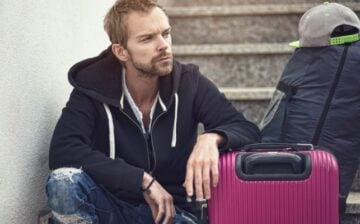Photo books are cherished keepsakes that capture precious memories, making them some of the most valuable items you own. Whether they are professional photo books, wedding albums, or collections of family memories, ensuring their safe transport during a move is crucial. Moving a collection of photo books from one house to another requires careful planning and attention to detail to prevent damage. This article provides the best strategies for transporting photo books, from choosing the right packing materials to arranging them securely in a vehicle.

Choosing the Right Packing Materials: Protecting Your Photo Books
The first step in transporting your photo books is selecting the right packing materials. The quality of the materials you use will directly impact the protection of your books during the move. Ensuring that your photo books are properly packed will help prevent damage from moisture, dust, and physical impact.
Essential Packing Materials
- Acid-Free Tissue Paper: Wrapping each photo book in acid-free tissue paper is essential for protecting the pages and covers from scratches, dust, and potential discoloration. Acid-free paper is pH-neutral and won’t cause any chemical reactions with the materials in your photo books.
- Sturdy Cardboard Boxes: Choose high-quality, sturdy cardboard boxes that are specifically designed for moving. These boxes should be strong enough to support the weight of multiple photo books without bending or breaking. Opt for smaller boxes to avoid overpacking, as photo books can be quite heavy when stacked together.
- Bubble Wrap: For additional protection, wrap each photo book in bubble wrap before placing it in the box. This extra layer of cushioning will help absorb any shocks or vibrations during the move.
- Packing Paper or Foam Padding: Use packing paper or foam padding to fill any gaps in the box and prevent the photo books from shifting during transport. This helps keep the books in place and minimizes the risk of damage.
Essential Packing Materials and Their Benefits
| Packing Material | Benefit | Best Use |
| Acid-Free Tissue Paper | Protects against scratches, dust, and discoloration | Wrapping individual photo books |
| Sturdy Cardboard Boxes | Provides strong support and prevents crushing | Packing and transporting photo books |
| Bubble Wrap | Adds cushioning to absorb shocks | Wrapping books before placing in boxes |
| Packing Paper/Foam Padding | Prevents shifting and provides additional protection | Filling gaps in boxes, stabilizing contents |
Statista reports that damage to items during a move is one of the top concerns for homeowners, with nearly 60% of people expressing worry about their belongings getting damaged. Proper packing materials are essential to mitigate these risks.
Arranging Photo Books in Boxes: Maximizing Protection
Once you have gathered the necessary packing materials, the next step is to carefully arrange your photo books in the boxes. The way you pack the books will significantly influence their safety during the move.
Packing Tips for Photo Books
- Place Heaviest Books at the Bottom: Start by placing the heaviest photo books at the bottom of the box. This creates a stable base and prevents lighter books from being crushed. Make sure to place the books flat to avoid bending or warping the pages.
- Alternate Book Orientation: When stacking multiple photo books in the same box, alternate the orientation of the books. For example, place one book with the spine facing down and the next with the spine facing up. This helps distribute the weight more evenly and reduces pressure on the spines.
- Use Dividers for Additional Protection: If you have particularly valuable or delicate photo books, consider using cardboard dividers between each book. Dividers provide an extra layer of protection and prevent the books from rubbing against each other.
- Fill Gaps with Padding: After arranging the books, fill any remaining gaps in the box with packing paper or foam padding. This step is crucial to prevent the books from shifting during transport, which can lead to damage.
- Seal and Label Boxes: Once the books are securely packed, seal the box with packing tape. Clearly label the box as “Fragile” and indicate that it contains photo books. This will alert movers to handle the box with care.
Consumer Affairs notes that 65% of moving-related damages occur due to improper packing, highlighting the importance of carefully arranging and securing your photo books in their boxes.
Transporting the Boxes: Ensuring a Smooth Move
After your photo books are packed, the next step is transporting them safely to your new home. Whether you’re moving locally or long-distance, taking the proper precautions during transport is essential.
Best Practices for Transporting Photo Books
- Personal Transport: If possible, consider transporting your photo books in your personal vehicle rather than placing them in a moving truck. This allows you to maintain control over the handling and placement of the boxes, reducing the risk of damage.
- Secure Placement in the Vehicle: If you are transporting the photo books in your car, place the boxes on a flat surface, such as the trunk or backseat. Avoid stacking other items on top of the boxes to prevent crushing. Use seat belts or other restraints to secure the boxes and prevent them from shifting during the drive.
- Climate Control Considerations: Photo books are sensitive to temperature and humidity. If you’re moving in hot or humid weather, ensure that the boxes are placed in a climate-controlled environment to prevent damage. Avoid leaving the boxes in a car for extended periods, especially in direct sunlight.
- Professional Moving Services: If you’re using professional movers, communicate with them about the importance of the photo books and request that they be handled with extra care. Some moving companies offer specialty packing and transport services for valuable or fragile items, which may be worth considering.
The American Moving and Storage Association states that hiring a reputable moving company can reduce the risk of damage during transport by up to 70%, making it a wise investment for valuable items like photo books.
Unpacking and Storing Photo Books: Final Steps
After successfully transporting your photo books to your new home, it’s important to take care when unpacking and storing them. The final steps of the move are just as critical to ensuring that your photo books remain in excellent condition.
Unpacking Tips
- Unpack in a Clean, Dry Area: Choose a clean, dry area to unpack your photo books. Avoid placing the books on surfaces that may be damp or dirty, as this could cause damage.
- Inspect Each Book: As you unpack, inspect each photo book for any signs of damage. Refer to the photos you took before packing to ensure that the books are in the same condition as when they were packed.
- Avoid Direct Sunlight: When storing your photo books in your new home, choose a location that is away from direct sunlight. Prolonged exposure to sunlight can cause fading and deterioration of the pages and covers.
- Use Shelves or Storage Boxes: Store your photo books on sturdy shelves, with the spines facing out for easy access. If you prefer to keep them in storage boxes, ensure that the boxes are stored in a cool, dry place to prevent moisture damage.
The Library of Congress recommends storing photo books in a stable environment with consistent temperature and humidity levels to preserve their quality over time.
Conclusion
Transporting a collection of photo books from one home to another requires careful planning, the right materials, and thoughtful handling. By selecting high-quality packing materials, arranging the books securely in boxes, and taking precautions during transport, you can ensure that your cherished photo books arrive at their new home in perfect condition. Following these tips will help protect your memories and keep your photo books looking beautiful for years to come, allowing you to enjoy and share them with future generations.
We hope you found this blog post The Best Way To Transport A Collection Of Photo Books Safely, useful. Be sure to check out our post Green Moving Tips – Eco Friendly Moving Guide for more great tips!
Have Experience in the Moving Industry? Want an Additional Income Stream? Work With All Around Moving!
Join our program! Put your experience in the moving industry and drive to good use. Profit as a moving consultant. Click here to learn more.





